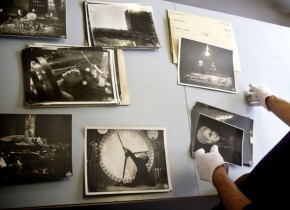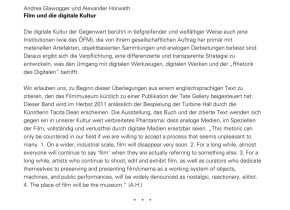Film Collection
Commercial Use

Requests for information on the commercial use of film (related) materials to
Collection Online: Haneke
Online Search | Requests for information on the Collection Michael Haneke for research purposes should be directed to
Collection Online: Vertov
Online Search | Requests for information on the Collection Dziga Vertov for research purposes should be directed to
Papers
This web-page provides essays, lecture transcripts, policy papers and conversations on topics that are central to the work of film museums and archives.
Archival research
In the early decades of film history, film was neither appreciated as an art form nor as a significant document; thus, little attention was paid to its preservation. Film was just another piece of merchandise, a consumer product which was customarily thrown away or recycled after its first use in the cinema. Even Thomas Alva Edison called his own creation a "useless invention".Those works which weren't immediately destroyed usually met with a dire fate sooner or later. Early celluloid (so-called "nitrate film") is highly inflammable and, if not stored at cool temperatures and carefully regulated humidity levels, it decays and eventually literally crumbles to dust. This explains why many films from the 1890s to the 1940s (and even later) have survived only in fragmentary form. Working closely with historians from various fields, the Film Museum endeavours to identify such films and to search for additional materials throughout the world.
The resulting knowledge has benefited both academic projects (dissertations, book and DVD publications) and film or television productions (such as historical documentaries) or museum exhibitions. Last but not least, the results of such research add to our ongoing presentation and educational programmes.









